Happy New Year!
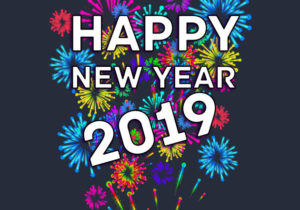
We’re taking a one week break while we prepare for another new year, with new trips and new posts–wishing you all a wonderful holiday!

We’re taking a one week break while we prepare for another new year, with new trips and new posts–wishing you all a wonderful holiday!
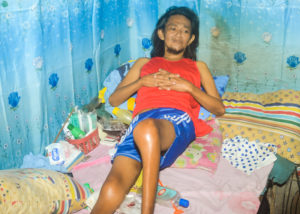
Merry Christmas! Happy Hanukkah! Happy Kwanzaa and to all, Happy Holidays!
In holidays past, we used to send out Christmas cards to everyone. We loved doing that and we love receiving them. As we have grown, and have expanded our humanitarian programs more internationally, we are seeing so many desperate needs. We decided instead to send a holiday e-card, with a story of someone in need we have helped. Instead of the usual $1,000 on cards, we are channeling this money and more into urgent needs at the holidays. We hope you understand and approve. We’re calling it our Christmas Carol! As you know, in Dickens’ A Christmas Carol, Scrooge by the end was doling out his money to help those in great need, especially Tiny Tim, who had a chronic disorder. And he discovered love and joy in the process.

Our “Christmas Carol” this year was helping Jose Pepito of the Philippines. Jose Pepito is 48, has hemophilia and inhibitors, five young children, and is single; his wife abandoned the family five years ago. His heartbreaking story is right from a Dickens novel.
He was orphaned early; his mother died while giving birth to him. His father died when he was nine. After his siblings abused him, he
left home at 16 and lived on the streets. He learned to drive a tricycle (called a tuktuk) at age 19, and used it to transport people. His ankles and knees took a beating and he endured many bleeds. He also survived an appendectomy, gallstone operation and a head injury!
He now lives in a slum, as a squatter. It’s known as a drug haven, making it difficult to visit him. But Andrea Trinidad-Echavez, a woman with VWD and founder of Hemophilia Advocates-Philippines (HAP), dared to visit him, to photograph his conditions, and ask for help from us.
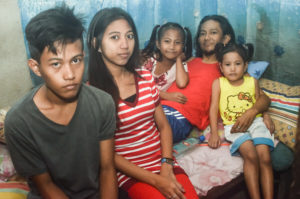
Jose Pepito suffered a psoas bleed—horribly painful—and pseudotumors. In November, the family’s tricycle – their main source of income – was taken by lenders after their father failed to pay monthly amortizations. Most importantly he needed an operation, which required the expensive and rare inhibitor drugs. HAP reached out to us, and we provided over $200,000 worth of medicine for his operation, thanks to inhibitor medicine donations from you all!
Andrea asked Jose Pepito what would be a good livelihood, since he is unable to use a tricycle now? He said a small store, as he lives in a colony. He can have a decent store with $1,000. “We will be providing his family with weekly grocery in the meantime,” Andrea said. “Right now, the kids are begging from their nei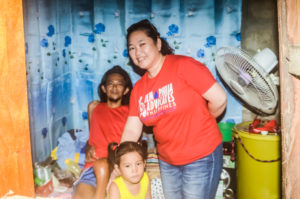 ghbors, just for them to eat!”
ghbors, just for them to eat!”
We forwarded the $1,000 for food and necessities. And we will get him a grant from Save One Life for a store. Merry Christmas, happy holidays and God bless us all!
You can help someone like Jose Pepito too! www.saveonelife.net
“And how did little Tim behave?” asked Mrs. Cratchit, when she had rallied Bob on his credulity and Bob had hugged his daughter to his heart’s content.
“As good as gold,” said Bob, “and better. Somehow he gets thoughtful, sitting by himself so much, and thinks the strangest things you ever heard. He told me, coming home, that he hoped the people saw him in the church, because he was a cripple, and it might be pleasant to them to remember upon Christmas Day, who made lame beggars walk, and blind men see.”
― Charles Dickens, A Christmas Carol
A parent’s worst nightmare—their child is murdered. You might think that life itself ends, and a child becomes nothing more than brief memories. What difference can a child make in 5 years, except to his immediat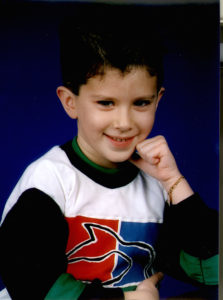 e family?
e family?
Imagine my shock when I opened the Boston Globe on a hot Monday morning in 1994, August 29th to be exact, and saw the blaring headlines that a little boy with hemophilia in Easthampton, Massachusetts was dead. I knew of this little boy. His family was on my mailing list; his grandmother Jenny had faithfully been sending me Kodak snapshots of him as he grew through his brief life. I pasted them in my hemophilia scrapbook.
According to police, Eric Dostie was in the care of his step-mother that Saturday, his biological father at work, when intruders broke in, tied her up, left their infant Emily in her crib unharmed, and smothered the boy with a pillow. There was no theft and no reason to kill a child. Police found no footprints, no forced sign of entry; neighbors saw or heard nothing. She was immediately a suspect, and a week later was arrested for murder. The case was strong when a neighbor came forward and said that the step-mother had once mentioned that she wanted more children, but Eric’s healthcare bills were too high. If only she could get rid of him.
Eric died the same year my youngest daughter was born, and the story shook me terribly. Not long after, I had lunch with a new business associate, Patrick M. Schmidt, president of FFF Enterprises of California. It was a meet and greet in Boston, having “chowda” at a seafood place. Patrick was just entering the world of hemophilia as a distributor of product, and wanted to know what he could do to give back to the community. His own daughter was the 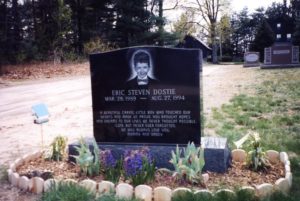 same age as Eric.
same age as Eric.
I thought of a lasting gift to the community, to keep Eric with us always. I proposed a scholarship in his name. When Patrick heard the story, it hit him hard that a little boy was murdered due to the cost of his healthcare—and at the hands of a mentally-ill step-mother. Patrick is an expert in healthcare and associated costs.
Almost 25 years later, the Eric Dostie Memorial Scholarship is still going strong, having helped hundreds of young people pay for college. We thought of a scholarship, because Eric once told his grandmother he wanted to be a scientist someday, and invent a cure, maybe a “chocolate pill,” that would avoid shots or cure hemophilia. He loved donuts, ducks and his family. He never got to meet his two half-brothers, both born after he died, but who both share the middle name Eric.
I was amazed to know that his half-brother Aaron, who I met several times as a child, is now on the committee to vet applications for the scholarship that bear’s his brother’s name. We recently became friends on Facebook.
It appears that a 5-year-old can have a lasting impact. Through the horror, there was hope. Thanks to Patrick M. Schmidt and NuFactor for sponsoring this scholarship, which turns 25 in 2019, and giving young people, and Eric’s parents, hope and permanence.
Applications are now being accepted for the 2019 Eric Dostie Memorial Scholarship.
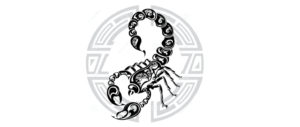 What does hemophilia have to do with the stars… as in astrology? Are people with hemophilia born under the Virgo sign more organized and liable to use the sterile technique? Are Aries more apt to be our advocates? Are Leos the performers and speakers at our conventions? Are those apt to be more scientifically-oriented born under Scorpio?
What does hemophilia have to do with the stars… as in astrology? Are people with hemophilia born under the Virgo sign more organized and liable to use the sterile technique? Are Aries more apt to be our advocates? Are Leos the performers and speakers at our conventions? Are those apt to be more scientifically-oriented born under Scorpio?
Our contributing writer Richard Atwood found a reference to hemophilia and astrology. A medical dictionary for astrology, to be precise. He writes, “According to the author, this medical astrology dictionary is “geared to the layperson who has limited knowledge of medicine.” The dictionary uses “the most commonly agreed-upon medical astrology definitions.” The author also acknowledges that there is a lack of agreement among astrologers “as to what rules what in the body.”
Hemophilia is defined as “malefics in second-eighth axis, Mars Saturn stress aspect, Jupiter afflictions, afflictions to Sun, Moon or Ascendant.”
Definitions are also provided for possibly related terms, such as bleeding, blood, blood clots, blood disease, inherited blood disease, blood loss, blood plasma, blood serum, blood transfusion, arterial blood, venous blood, cerebral hemorrhage, coagulate, fibrin, hemorrhaging, hereditary disease, joint inflammation, limping, nose bleeds, plasma, plasma balance, red blood cells, white blood cells, styptic, and wounds.
In the section on Uranian Astrology, the definition for blood disorders is “Neptune = Sun/Hades; Sun + Hades – Mars = Neptune.” A bit hard core for my tastes!
Richard notes that the dictionary has 89 pages for the medical astrology definitions, plus 5 pages for Uranian Astrology definitions. The book includes a 3-page bibliography. The only bleeding disorder to be listed is hemophilia; all other bleeding disorders are omitted. As for the planets, Mars rules blood ailments, Jupiter rules arterial blood circulation, Saturn rules chronic disease, andVenus rules venous circulation. The author, who has the highest certification of the National Council of Geocosmic Research with a CA NCGR Level IV, specializes in medical astrology and nutrition in New York City.
Well, I am a true-blue Scorpio, and Mars rules my sign, so that works for me. How do your zodiac sign characteristics fit your bleeding disorder?
Diane L. Cramer, 2003, Dictionary of Medical Astrology: A Compilation of Astrological Terms (Physical, Emotional and Mental) and Disease Significators Used in Traditional Astrology. Tempe, AZ: American Federation of Astrologers. 98 pages.
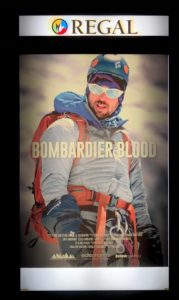 Coincidences are God’s way of staying anonymous. Albert Einstein
Coincidences are God’s way of staying anonymous. Albert Einstein
Yesterday I was in Denver, Colorado, to attend the hometown premiere of Bombardier Blood, the new documentary that chronicles the life and achievement of Chris Bombardier, a person with hemophilia B this year who became the first person with hemophilia to complete the Seven Summits. The movie was debuted at NHF’s annual meeting in Orlando, in October, to an audience of over 500. Yesterday, the Colorado Hemophilia Society rented an IMAX theater, and invited the Colorado bleeding disorder community to attend.
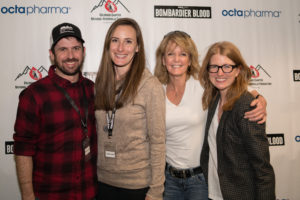
What a proud day for Colorado! Chris and his wife Jess attended, flying in as I did from Boston, which recently became their new home. Chris’s whole family came: parents Alan and Cathy, Aunt Bev and Uncle Jay Labe and cousin Nicole, and of course, “Crazy” Uncle Dave. And while Chris’s whole family is incredibly warm, down-to-earth and personable, I really wanted to meet this character Uncle Dave! When you see the movie—and you will someday—you will know what I mean!
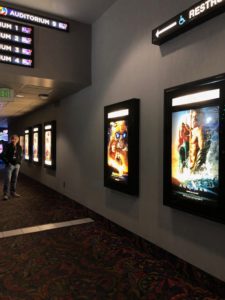
We congratulated the astounding film-making and editing team of Rob Bradford and Steven Sander, who were both present, and thanked expedition and film sponsor Octapharma. The theater filled with community members—moms, dads, small children, and many of Chris’s peers with hemophilia—holding popcorn, soda and high expectations. We settled into our seats before the mammoth screen, hushed our voices, silenced our cell phones, and the theater darkened. The darkness faded into a scene of Everest, prayer flags, snow and ice, and Chris, trying to skewer a vein in the icy air. The film continued from this moment at Everest, into a 90-minute tale of what it took to get him there. It is a fascinating story of a boy with hemophilia who dreamed of being a baseball player, who was thwarted in his dreams, who suffered depression, anger, who was disconnected from his own local community… until key events unfolded in sequence, “like divine intervention,” one audience member confided. The events included the right people appearing in his life at the right time, until his destiny seemed all but spelled out. This young man would conquer Everest.
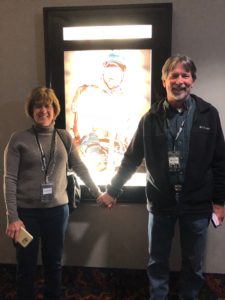
I took part in Chris’s journey at some point, and have seen this movie three times now. It never fails to inspire. You want to jump out of your seat and get moving, to find your own dream, and then make it happen. If Chris could climb the Seven Summits (a feat only about 450 humans ever in history have done!), and did it with hemophilia, then what can the rest of us accomplish? We are only limited, it seems, by our own imagination, and our belief in ourselves.
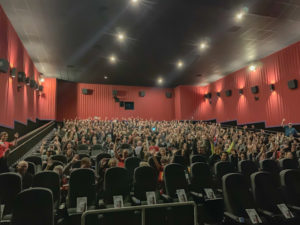
But some new footage was added to this version of the film—the role played by the vivacious and energetic Amy Board, executive director of the Colorado Hemophilia Society. Amy was the person who drew Chris out from the crowd. She encouraged him to come to hemophilia camp, where Chris met someone else with hemophilia for the first time. He saw how the children were active, happy, connected. And Chris became connected. He volunteered at camp, became a mentor to the children. Due to Amy, Chris became part of the hemophilia community. It was the first major step on the long hike to better mental health, a career, a new vision… and ultimately Everest.
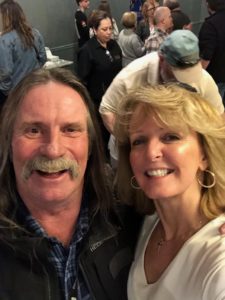
Chris did not just scale the Seven Summits or make a movie about himself; he has promoted hemophilia worldwide with his life-risking achievement, and he has made a call for action for others, to help those in developing countries through Save One Life. Without Amy, without camp, he might not have joined the community. Without working at the Indiana HTC as a lab tech, he might never have gone to Africa, where his eyes were opened to the suffering of his blood brothers overseas. Without Uncle Dave? Who knows. Bombardier Blood boasts a cast of supporting characters who embody this mystical truth: We never know what ripples we create when we reach out, take a risk, and care about another human being.
Chris did it. He made history. First person with hemophilia to scale Everest, and to bag the Seven Summits. And I suspect that Chris’s story is far from over, but is really just beginning.
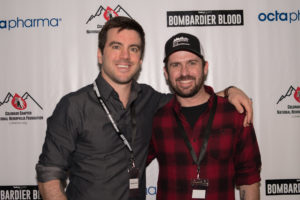
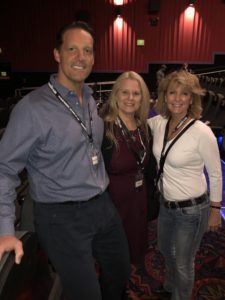
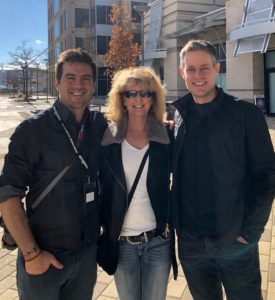
Would you like to be added to our email list to continue to recieve future editions of PEN in PDF format?
Yes: No:
Please share your location to continue.
Check our help guide for more info.

